Jdm Concept - Cusco Preorder Ends 8 Feb 06 *******
Announcements
-
Similar Content
-
Latest Posts
-
100% accurate! We are a pack of know it alls.... But, I bet people go to you when they have a problem! I've been on a bit of a clean up rampage too over the past month! I've thrown more shit in the bin over the past 2 weeks than I have in the past 3 years combined! Anyway, it's all good fun being different! My wife sometimes does not agree!
-
ADHD in all form isn't about "can focus, or can't focus" or is hyper active or isn't etc. It's all a dysregulation. Either time feels to be stationary, or time just vanishes in a split second. We are either under focussed on the task at hand (as we're over focussed on our surroundings) or we have no idea an atomic bomb went off beside us as we're so hyper focussed and locked in on things. Not to mention the rapid fire thought process. What it takes a "normal" process to think up a solution to a problem, ADHD will be able to give you 5 different ways to solve the problem, and the pros and cons of each. While we can be highly impulsive and lack the ability to "control ourselves" we can also become paralysed with the inability to make a decision for ourselves. While most of us have an OCD like requirement for perfection, we lack the ability often to remain focussed to get things to a perfect state. Those with undiagnosed ADHD as adults, can often find the last part actually stops them ever attempting to do things that they have the ability to do, as the reasoning is often "if I can't do it perfectly, it's not worth doing" As for projects... Ha ha ha, I still need to take the other half of my wall trim down in the Fiance's office so I can paint it. Need to finish digging and running the back yard drains, my R33, getting the Ninja bike registered (now being sold), the moped project, fixing either of the lawn mowers so they're reliable, along with a myriad of other things. It's why I've been going through lately and just being brutal and clearing projects off that I won't actually ever complete. IE, moped will go to the tip, or be given away, bike is being sold, Subaru project being sold, some parts for other projects given away. Or I've been making myself focus on one thing at a time, by ticking off the smallest quickest ones first. There's also a reason by our mid twenties we seem to be "know it alls", as we've all been down some of the weirdest and oddest rabbit holes when you follow the dopamine trail. It's often also why we're more a jack of all trades, but not a master of one. However, pretty much all of my hobby projects, in one way or another, all come back around to automotive. That's my zen area.
-
Remember reading about this not too long ago. been for sale for a long time this is like when the wife says you need to sell the car so you put it up for a ridiculous price no one will pay
-
You are perhaps suggesting that it is not a super car? Well....it's not an AU.
-
Dropped the MX5 of this morning to get the hardtop colour matched and some PDR done, they are also going to give it a buff to remove some "stubborn" swirl marks and light scratches in the clear coat Over the last few months the poor little thing has copped some shopping centre car park abuse, I try to not park in them, but hitting Westfield's a few times over the last few months has taken its toll, nothing really bad, but enough of a trigger for a "while we're in there" thingie Once it's back and all the one colour, with a few dents and mark's removed I'll give some of these products a go and see what they're like
-

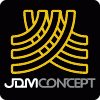


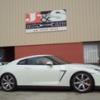
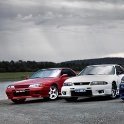
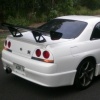

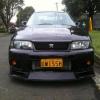

Recommended Posts